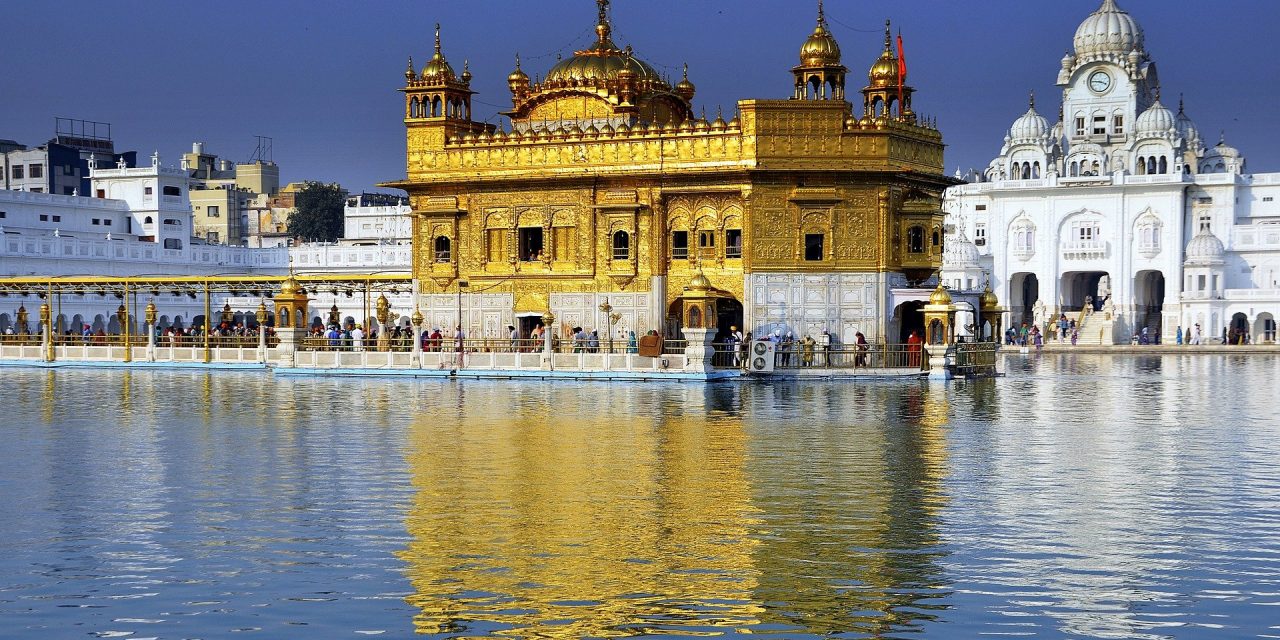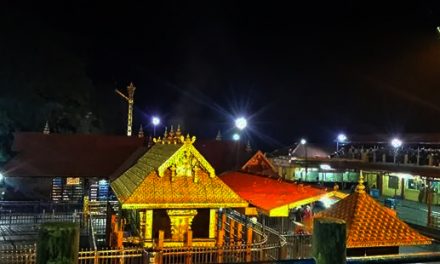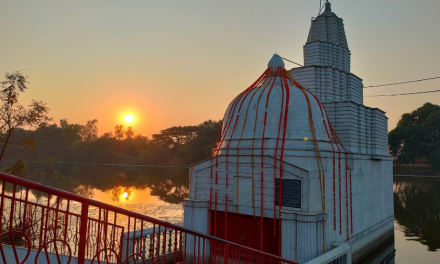The Golden Temple is the most pious centre for millions of Sikhs. It is what the Vatican to Christianity, Mecca to Islam. The temple is also known as Amritsar temple, ‘Harmandir Shahib'(abode of God), ‘Darbar Sahib'(exalted court). Although this centre of religion belongs to Sikhs, it started its wend with the slogan of secularism of this holy country, India. This sacred place of the Sikhs is in ‘Amritar’, Punjab in the Indian subcontinent. It was an idea of a place of devotion for the Sikhs. Guru Arjan Sahib, the fifth Sikh Guru, took charge of designing the edifice as well as some devoted Sikhs conspicuous personalities like Baba Buddha Ji, Bhai Gurudas Ji, Bhai Sahlo Ji and many others. We do not know whether the land for this edifice was acquired on payment or free of cost from the landlords of native villages by the earlier Guru Sahibs. From history books, we can see that it was ascertained a blueprint by Guru Amar Das Sahib to excavate a holy tank called the ‘Amrit Saras'(pool of nectar), which inherits the name of the popular city of Punjab, ‘Amritsar’, primarily came to be known as ‘Ramdaspur’, founded by Guru Ramdas Sahib himself.
Its constructional work commenced in 1570 and was completed in 1577 by Guru Ram Das Sahib under Buddha Ji(first Granthi of ‘Guru Granth Sahib’). There is a uniqueness to its structural style. Unlike most of the Hindu Temples of India stand on the higher level, this monument with antipathic nature was built on the lower level. Most Hindu Temples has a single gate for entrance and exit for the tourists and devotees, but this temple owes a gate each on the East, West, North and South to indicate that it is opened for all without any distinction of caste, creed, sex and religion and has a path of concrete around the pool. Sri Harmandir Sahib, or Sri Harimandir Sahib, has acquired its seat in the centre of the pool(tank) on a 67feet square platform. In contrast, exclusively, the temple has an area of 40.5feet square. The ‘Darshani Deori'(the main entrance) waits to take the tourists and devotees away warmly to ‘Harmandir Sahib’. Its height measures this entrance by 10feet, and the width indicates 8feet 6inches. This ‘Darshani Deori’ leads to the pathway to ‘Harmandir Sahib’, which is 202feet in length and 21feet in breadth. A circumambulatory path of 13feet wide is connected with the bridge, encircles the main shrine, and leads to the ‘Har ki Pauri'(steps of God). Continuous reading of the ‘Guru Granth Sahib’ is practised here. The main structure of Sri Harmandir Sahib is a three-storied tower.
The facade of this holy structure faces the bridge is imposingly ornamented with repeated cusped arches. In September 1604, the building got its final work. The sanctum sanctorum and the pool are encircled with a collection of buildings enlisted with ‘Akal Takht(a place of justice and consideration of temporal issues of Sikhism and was founded by Hargobind Ji). This ‘Akal Takht’ also houses the ancient weapons used by the Sikh warriors. On the north side of the tank and main entrance to the complex, there is a clock tower, the offices of the Gurdwara Committee, a Museum. On the east side, there is langar(free hot meals such as ‘chapatis’, ‘flatbreads’ and vegetables served to the people of around 20000 per day) and an assembly hall. To the south of the tank, a garden and the tower of Baba Atal are there also. A magical and wavy old tree named ‘Jubi Tree’ has acquired an allotted area on the northwest corner of the compound, which is believed to contain special powers. It was planted about 450 years ago by the first priest, Baba Buddha Ji. In the year 1604, the only holy scripture of the Sikhs, ‘Guru Granth Sahib’, was installed in Sri Harmandir Sahib by Guru Arjan Sahib. It is kept in the temple in the daytime, whereas it is kept in the ‘Akal Takht’ at night, and Baba Buddha Ji was appointed as its first Granthi (reader). Hence it obtained the status of ‘Ath Sath Tirth’ and became the only destination of the Sikhs from all over the world. This holy temple was attacked several times and demolished by the Afghan and the Mughal invaders. The temple was finally renovated in marble and copper overlaid with gold foil of 750kgs during the tenure(1801-1839) of Maharaja Ranjit Singh, the founder of the Sikh empire. The Harmandir Sahib itself and its Akal Takht faced a massive attack on 06/06/1984 by the Sikh extremists. A horrific fight was held between Indian troops and the Pakistan sponsored Sikh extremists known as Khalistanis. Both the structures were heavily damaged and were repaired in the following time. It is whispered by the people, and from the information of the religious Indian history, the great saint ‘Valmiki’ wrote the epic, ‘Ramayana’ here.
Bathing is arranged for the Sikhs from the outer platform of the pool, whereas devotees get the same in the Golden Temple’s holy pool. A visitor has to cover his/her head positively before entering the temple premises and must put out his/her shoes to get permission for the same. A separate foot-washing pool is there, which must be passed through by everyone before the entrance.
Usually, the temple faces less crowd in the early mornings on weekends, but on any special occasion, it is hiked by 1,00,000 or more.
The Sikhs, particularly the men, wear distinctive turbans. They keep unshorn hairs, a wooden comb, an iron bracelet, and a ceremonial blade, symbolising peace, humility, and equality.
Modes of communications are well-furnished to India’s major and main cities from Amritsar by air, railway, and roadway. The Golden Temple has been set up around 11kms away from the city centre of Amritsar.
By Air: The ‘Sri Guru Ram Das International Airport of Amritsar’ is where tourists can avail themselves of daily direct flights to and from Delhi, Mumbai, Bengaluru, Chandigarh. ‘Raja Sansi International Airport’ is also a convenient venue for all the tourists to get regular direct flights to and from all the important cities of India.
By Railway: The Amritsar Railway Junction Station is a central station that links all the important railheads of Punjab and all the main cities and towns of India such as Delhi, Mumbai, Hyderabad, Agra, Ahmedabad, Kolkata and Chandigarh day and night regularly. This station also has a connecting railway line to Pakistan.
By Bus: Amritsar is on the NH 1 and conveniently connected to the rest of the state, Punjab and other states of India. Government and private luxury and deluxe buses ply to and from Ambala, Patiala, Delhi, Chandigarh and Jammu. Cabs, rickshaws, auto-rickshaws, taxis or buses are the sorts of transportation.
Accommodation in Golden Temple: Sarai can be booked on a first-come-first-serve basis, conditional to vacancy and desired dates. Seven inns wait earnestly to facilitate the pilgrims providing lodges supervised by ‘Sri Harmandir Sahib Authority’.This authority provides services through its reception counters day and night to the tourists and devotees. For all accommodations, tourists have to present in ‘Sri Guru Arjan Niwas’ or contact the following numbers.
+91-183-2553957 | +91-183-2553958 | +91-183-2553959.
Apart from Sarai, tourists can avail themselves of some private hotels for their all accommodations and amenities, and some of them are as follows: Sharma’s BNB(standard Double Room), Hotel Sapphire(Deluxe Double Room), Om Sai B&B, Ramada Amritsar, Hotel Kabir Residency.
Postal Address: Amritsar, Punjab, pin: 143001, India.
Contact Number: +91-183-2553957/58/59.
Website: http://www.goldentempleamritsar.org
This shrine opens its door for the devotees at 4:00 a.m. It closes its door for the day at 11:00 p.m. Visitors are allowed to be in the temple for 1hour to 2hours, and they are free to enter the temple. All the Sikhs rather entire communities of the world are admirers and well-wishers of this famed destination.
Image Courtesy: RichardMc
















